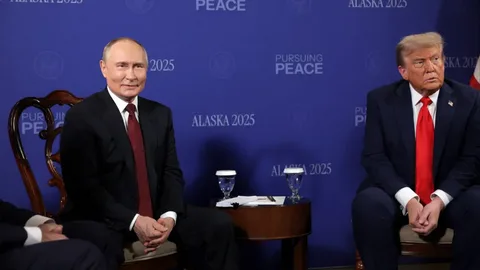Introduction
The announcement of the Putin Trump Alaska Summit quickly became one of the most talked-about events of the year. Taking place in Anchorage, Alaska, the meeting brought together two figures who have dominated international politics in very different ways. Former United States President Donald Trump and Russian President Vladimir Putin have long been associated with a complex relationship that has often sparked debate both in their home countries and across the world. Their meeting on American soil, particularly in Alaska, carried symbolic and strategic importance that drew attention from media outlets and analysts everywhere.
Why Alaska Was Chosen
Alaska was not a random choice for the summit. The state shares a geographic connection with Russia, separated only by the Bering Strait. This proximity offered a symbolic reminder of the historical ties and tensions between the two nations. Alaska also provided a more neutral environment compared to Washington, D.C., or Moscow. Hosting the summit in Anchorage allowed both sides to highlight the idea of meeting halfway, while also reminding the world of the region’s geopolitical significance.
The choice of Alaska also reflected practical considerations. The state is home to military bases and a strong American presence in the Arctic, areas that remain strategically important as Russia continues to expand its influence in northern territories. Holding the summit there underscored how both leaders view the Arctic as a new frontier for power and resources.
The Key Topics of Discussion
At the heart of the summit were issues that have defined U.S.–Russia relations in recent years. Security concerns, economic competition, and global conflicts shaped the dialogue between Putin and Trump.
One of the central points was energy. Both the United States and Russia are major players in global oil and natural gas markets. Discussions in Alaska touched on competition, cooperation, and the impact of shifting energy demands on the world economy.
Another significant topic was military presence in the Arctic. With melting ice opening new shipping lanes and resource opportunities, both nations have expressed interest in expanding influence in the region. The summit provided a stage for both leaders to signal intentions and test each other’s strategies.
Global security issues also surfaced. Putin and Trump reportedly discussed ongoing conflicts, the role of NATO, and how U.S.–Russia relations could affect broader international stability. While public statements were limited, analysts believe these private conversations carried substantial weight.
Public Perception and Media Reaction
The summit received enormous coverage across global media. In the United States, reactions were divided. Supporters of Trump praised his willingness to engage directly with Putin, seeing it as a step toward stronger international diplomacy. Critics, however, argued that such meetings risked giving too much legitimacy to Russia without securing meaningful concessions.
In Russia, the narrative was presented differently. State media highlighted the summit as proof of Putin’s global influence, portraying him as a leader capable of negotiating with high-profile figures from the West. This reinforced his image at home as someone who defends Russian interests on the world stage.
Internationally, opinions were mixed. European leaders expressed concern that U.S. engagement with Russia could weaken allied unity, while other nations viewed the summit as a potential opportunity for easing tensions. The world’s response demonstrated how deeply intertwined U.S.–Russia relations remain in shaping global politics.
Symbolism Beyond Policy
While the policy discussions were crucial, the symbolism of the summit was equally powerful. The image of Trump and Putin standing together in Alaska carried multiple layers of meaning. For some, it represented the possibility of dialogue between two powerful but often opposing figures. For others, it symbolized the persistence of rivalry, with Alaska itself reminding the world of territorial history and strategic competition.
Even small details, such as the choice of venue, the body language between the two leaders, and the public remarks they made, were analyzed by observers. The summit became as much about perception as it was about policy.
Looking Ahead
The Putin Trump Alaska Summit did not produce dramatic agreements or immediate breakthroughs, but it marked a significant moment in the ongoing story of U.S.–Russia relations. It showed that even years after leaving office, Trump’s presence in global affairs still attracts attention, while Putin continues to assert his role on the international stage.
What comes next remains uncertain. Whether the summit will lead to concrete changes or simply remain a symbolic gathering is something only time will tell. What is clear, however, is that the event highlighted the enduring complexity of relations between the United States and Russia, as well as the importance of the Arctic in shaping future strategies.
Conclusion
The Putin Trump Alaska Summit was more than just a meeting between two leaders. It was a moment that underscored global tensions, highlighted strategic competition in the Arctic, and reminded the world of the enduring significance of U.S.–Russia relations. For supporters and critics alike, the summit offered insight into how power, symbolism, and diplomacy intersect in today’s geopolitical landscape.




Comments are closed